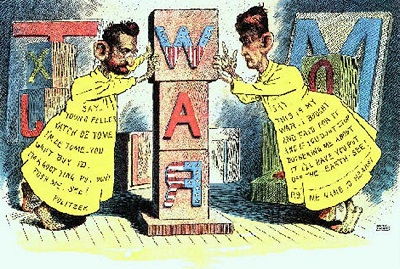Yellow Journalism
Yellow journalism is biased opinion displayed as objective fact. The practice of yellow journalism involved sensationalism for the purpose of selling more papers.
The roots of yellow journalism are related to two papers founded in the 19th century – The New York World, run by Joseph Pulitzer and The New York Journal, run by William Randolph Hearst.
It all started with the Industrial Revolution which affected the newspaper industry. Machines could easily print thousands of papers in a single night.
Joseph Pulitzer purchased the World in 1883 and made it entertaining, filled it with pictures, games and contents that drew the readers’ attention.
Crime and sensational stories filled many of the pages. Stories headlined “How Babies Are Baked”and “Burning Babies Fall From The Roof” drove up the World’s circulation.
Just two years after Pulitzer took it over, the World became the highest circulation newspaper in New York.
William Randolph Hearst, who owned San Francisco Examiner, was impressed by Pulitzer’s success. He purchased the New York Journal in 1895 and he became a key rival of Pulitzer. The competition was fierce.
The Sunday Entertainment of these papers included the first colour comic strips.
Hogan’s Alley, a comic strip starring a bald child in a yellow nightshirt (nicknamed The Yellow Kid) became popular in the World in 1896. It was drawn by the famous 19th century cartoonist, Robert Outcault. Hearst hired him away to create the strip in his newspaper. Pulitzer then hired another artist, George Luks, to continue the same strip in his newspaper. So the use of the term “yellow journalism” started with more serious newspapers writing on the excesses of “the Yellow Kid papers.”
Uradite kratak test da proverite kako ste razumeli tekst »


